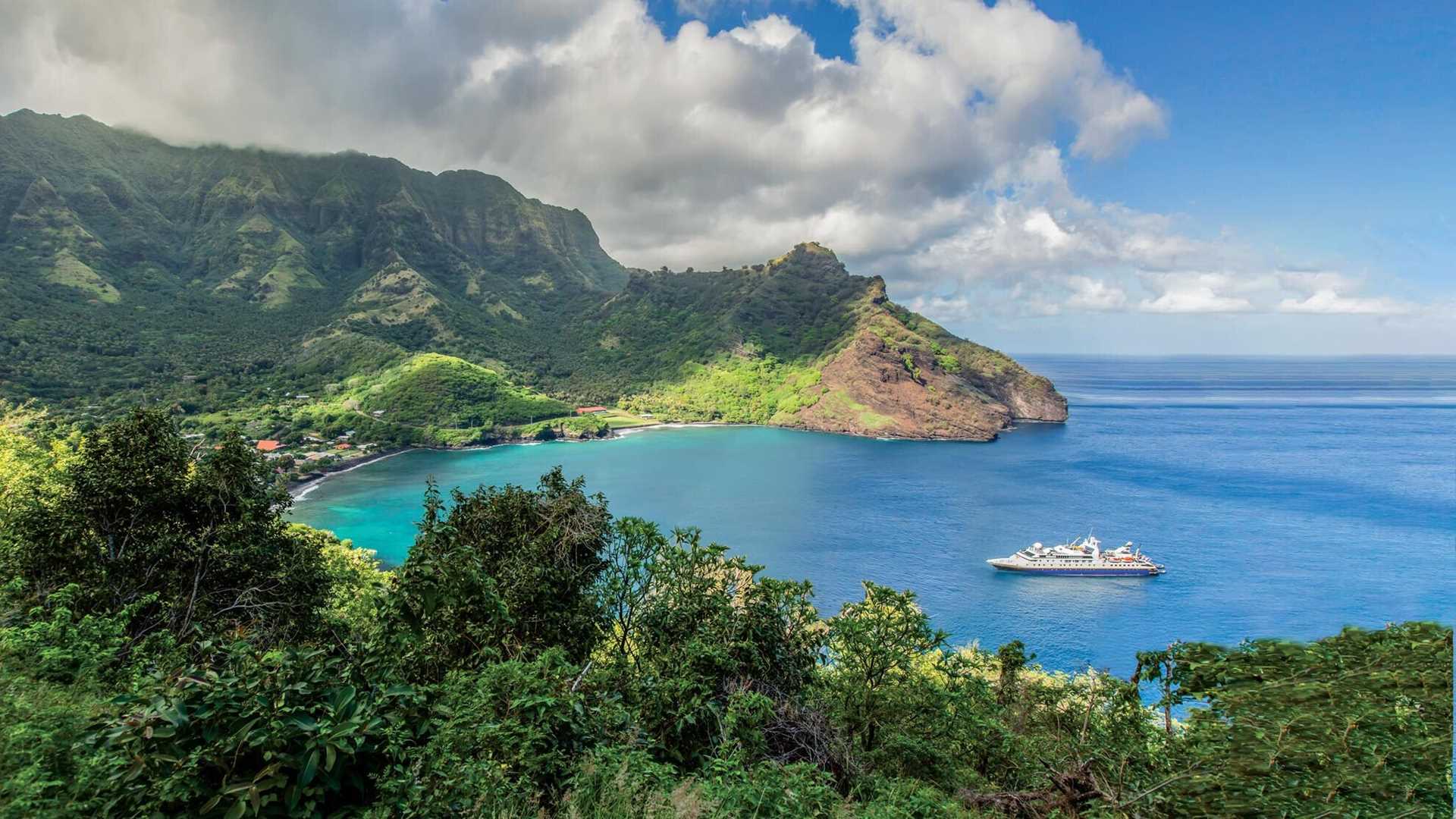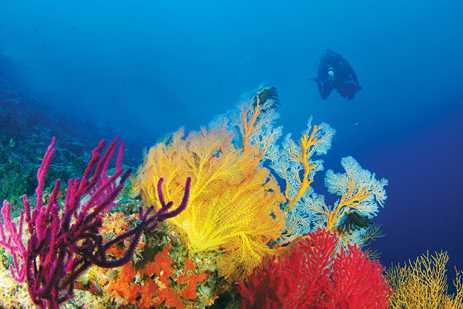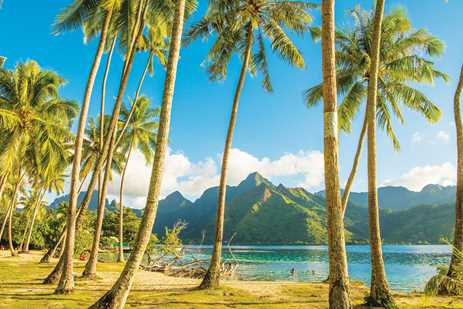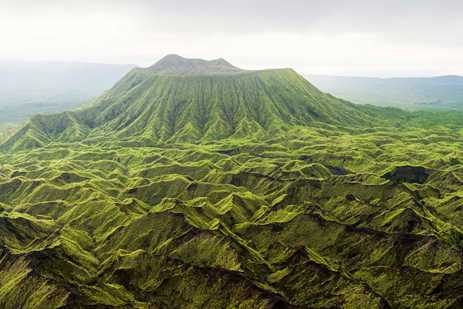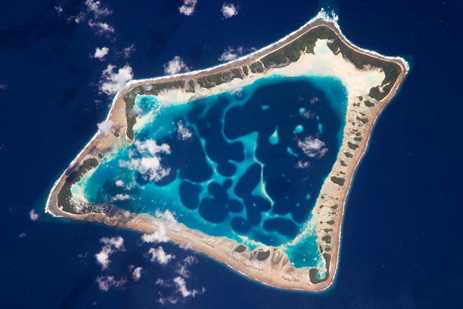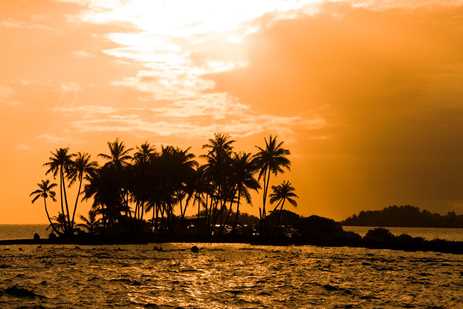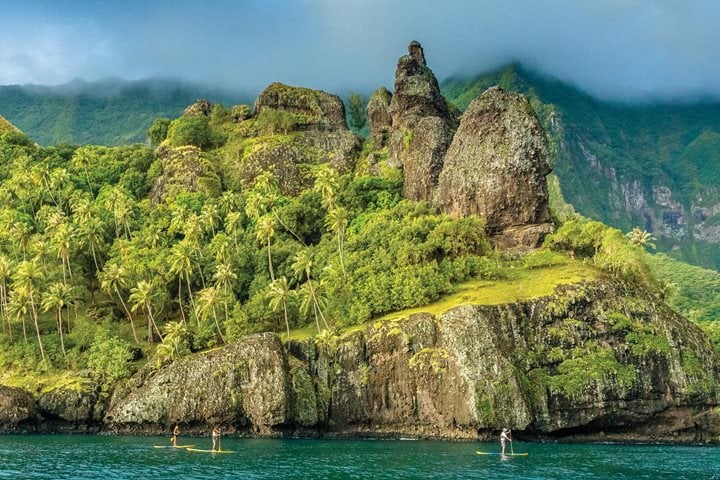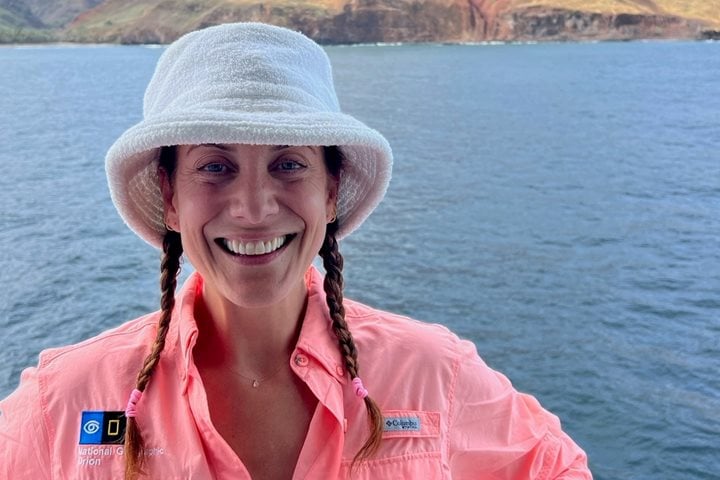The diverse islands that make up Polynesia and Melanesia each have their own secrets to discover and choosing the right voyage among the sea of options can feel a bit daunting. With help from Karen Kuest and Susan Salvin, our expedition developers for these two key regions of the South Pacific, we take a look at the highlights and differences—and reveal what it's like to explore these destinations on an expedition with Lindblad-National Geographic. Get Inspired by Photos, Videos, Webinars, Stories, and Exclusive Offers. Sign Up
Where are Polynesia, Melanesia and Micronesia?
In order to talk about Polynesia and Melanesia, where Lindblad Expeditions-National Geographic currently offers voyages, it's helpful to place them in context with neighboring Micronesia. “All three of these regions fall within the South Pacific, or Oceania,” explains Kuest. “And those two terms, South Pacific and Oceania, are used interchangeably.”
Polynesia, the largest and most easterly of the three zones, spans from Hawaii at its northernmost point to New Zealand in the south, and as far as Easter Island, with its most well-known nations being Tonga, Samoa, Tuvalu, the Cook Islands, and French Polynesia.
Melanesia skirts north of Australia, encompassing Indonesia to the west and Fiji to the east, and includes Papua New Guinea, the Solomon Islands, and Vanuatu among others. North of Melanesia is where you'll find Micronesia, a scattering of small islands and four main archipelagos: the Caroline Islands, the Gilbert Islands, the Marshall Islands, and the Mariana Islands. Micronesia includes Palau on the western side and Kiribati to the east.
Where do their respective names come from?
These three regions were given their English names by Europeans. Polynesia, meaning “many islands,” was first referred to by that name by French writer Charles de Brosses in the mid-18th century. Melanesia and Micronesia were both named by French explorer Jules Dumont D’Urville, the latter for its countless tiny islands and the former for the dark complexions of its residents.
How does the geography of Polynesia and Melanesia differ?
The Ring of Fire skirts along the northern edge of New Guinea and the Solomon Islands, placing much of Melanesia right in prime volcanic territory. “Where it’s part of the Ring of Fire you have more volcanic formation of the islands,” says Kuest. “That means you’ll find high cliffs and old volcanoes that are eroding, or islands formed by upthrust and tectonic activity.”
As you head east into Polynesia, it starts to flatten out. “There’s some volcanic activity, but there’s a lot more coral reef systems,” explains Kuest. Here you’ll find fewer active volcanoes and more remnants of long-ago activity, such as atolls which were formed by reefs ringing ancient volcanoes that have since collapsed into the sea.
What kind of wildlife encounters can you have in Melanesia versus Polynesia?
Melanesia isn’t without its mammals, reptiles, and amphibians—there are iguanas in Fiji, flying foxes, or fruit bats, in Vanuatu, and the recently discovered vika, a critically endangered tree-dwelling rat, in the Solomon Islands. But the region really shines in its diversity of bird life, says Salvin. “There are a lot of very brightly colored birds, and a lot of species that are very popular with the birders.”
Papua New Guinea is home to hornbills, cockatiels, sunbirds, and the chickenesque—yet thrilling to spot—megapode. On Taveuni, known as Fiji’s “Garden Island,” travelers have the chance to spot 22 endemic bird species from the nearly 100 species that are estimated to dwell on the island, and on away-from-it-all Kadavu, visitors are apt to see a handful of eponymic birds, including the Kadavu shining parrot, the Kadavu fantail, and the Kadavu honeyeater, among others.
Polynesia, too, is a birder’s dream. “For the most part Polynesia has cuckoos, doves, and pigeons, but they’re more colorful than what we’re used to,” explains Kuest. On Makatea, visitors can seek out the native Makatea fruit dove, a bright green bird with a striking purple crown, while in the Tuamotus you can also catch a glimpse of the chattering kingfisher and blue lorikeet, along with some of the 80-odd other species that spend time on these lush islands.
What about marine life in these regions?
Beneath the surface, the wildlife sightings only get richer. “The underwater experience is truly spectacular in both places,” says Salvin. Melanesia is world-famous for its prime underwater sightings—the region encompasses the “Coral Triangle,” a zone spanning from Malaysia to the Solomon Islands and as far north as the Philippines that’s renowned for its astonishing underwater biodiversity.
“Seventy-five percent of the world’s coral species are found within the region—nearly 600 different species—and over 2,000 types of reef fish,” says Salvin. Of the seven types of turtles that roam the seas, six of them can be spotted within this zone. You’re also apt to snorkel or dive with manta rays, giant clams, blacktip and whitetip sharks, reef sharks—and even the occasional sea snake.
Polynesia has its own spectacular opportunities for underwater sightings. Divers and snorkelers around the world put Rangiroa on their bucket lists for its density of marine life, most notably at the 'Aquarium,' a reef fringing the fleck of sand known as Moto Nui Nui. With crystal-clear visibility and manageable currents, this is an ideal spot for even beginner snorkelers to swim with massive schools of snapper, sergeant major fish, and convict tangs, along with countless other species.
Over in the remote Marquesas, divers and snorkelers have the chance to see massive manta rays—most likely the reef manta ray, whose wingspan measures around ten feet, but if you get particularly lucky, the giant oceanic manta ray makes its home here, too, and can measure up to 30 feet.
What other underwater sights can travelers look forward to?
Marine life isn’t all there is to enjoy beneath the waves. In Melanesia, divers and snorkelers can explore World War II wreck sites, like that of the SS Coolidge in Vanuatu, and witness natural wonders like the Matevulu Blue Hole grotto on Espiritu Santo, an island in the Vanuatu archipelago. In Polynesia, freshwater adventures are on the docket, too—most notably a once-in-a-lifetime dip in a subterranean cave grotto where you can float surrounded by stalagmites and stalactites.
What are some of the cultural differences between Polynesia and Melanesia?
Despite their geographic proximity (relatively speaking, that is), Melanesia and Polynesia are quite culturally distinct. Most Polynesian countries trace their linguistic and genetic roots back to ancient Taiwan and Southeast Asia, among others, while residents of Melanesia are largely descended from ancient indigenous populations in what is now Papua New Guinea.
“Polynesian culture is more advanced—these are the seafarers who navigated by the stars,” says Kuest. “They traveled all over the region and afar.” Accordingly, travelers with Lindblad Expeditions-National Geographic will get a glimpse of their lasting influence at sacred places like Marae Taputapuatea on Ra’iatea, in the Society Islands.
During your Polynesian adventures, you’ll learn about the advanced wayfinding skills of these long-ago navigators, the rich meaning and symbolism behind tattooing traditions, and the history of Polynesian exploration and settlement across this vast region.
While Polynesian culture has more commonalities as you travel from island to island, Melanesia often offers a distinctive experience at each stop along the journey. In part that’s due to more recent influence, or a lack thereof, explains Kuest. “Polynesia has had a lot more exposure to the West. Melanesia is just so remote, so they don’t have that constant day-to-day interaction with the West, so they’ve retained more of their cultural background.”
That means even island to island you’ll get the chance to see new and unique cultural practices and traditions that seem to share very little with those of neighboring island communities. You might get a glimpse of handicraft traditions such as wood carving and weaving, and experience the impressive range of Melanesia’s many islands through its dances: spear dancing in the Solomon Islands, the masked ritual good-versus-evil Rom dance on Ambrym in Vanuatu, and Kastom dances that honor the heritage of locals in Vanuatu’s Tanna Island. Travelers with adventurous palates can also look forward to a rare opportunity to sip kava with locals in Fiji. Made from a ground root and shared ceremonially, the drink is said to have numbing and intoxicating qualities, but some travelers call it an acquired taste.
Very often, the islands of Oceania can be perceived at first as a tropical-paradise monolith. But once you experience Polynesia or Melanesia firsthand, you'll begin to understand the singular qualities of each region and the incredible patchwork-quilt of cultures and ecosystems found within.

